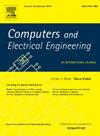High-performance front end PFC controller design for light electric vehicle charger application
IF 4
3区 计算机科学
Q1 COMPUTER SCIENCE, HARDWARE & ARCHITECTURE
引用次数: 0
Abstract
Power factor correction (PFC) boost converters operating in CCM (continuous conduction mode) typically utilize average current mode (ACM) control alongside a LPF (low-pass filter) to reduce the impact of double line frequency ripple on the current loop. However, the LPF limit the voltage loop bandwidth in ACM-regulated converters, resulting in sluggish dynamic response. Additionally, zero-crossing distortion (ZCD) often occurs in the current control loop due to inaccuracies in tracking the reference current at the zero crossing point of the waveform. To address these challenges, this paper proposes a feed-forward control strategy that utilizes supply voltage and output current, effectively eliminating the need for an LPF and enhancing transient response. The voltage loop is tuned using the conventional Z-N method, while the Grey Wolf Optimization (GWO) technique is employed to optimally tune the gain parameters of the current controller (KPi and KIi). This approach effectively reduces reference tracking errors and mitigates ZCD, offering a balance between simplicity and performance. The proposed method is simple, offering fast transient and steady-state response, low THD, near-unity PF, and tight voltage regulation under fluctuating conditions. The effectiveness of this approach is validated through MATLAB/Simulink simulations, and hardware verification is conducted using a 500 W laboratory prototype controlled by a dSPACE 1104 digital controller.
面向轻型电动汽车充电器应用的高性能前端 PFC 控制器设计
在 CCM(连续导通模式)下运行的功率因数校正(PFC)升压转换器通常利用平均电流模式(ACM)控制和 LPF(低通滤波器)来降低双线频率纹波对电流环路的影响。然而,LPF 限制了 ACM 调节转换器的电压环路带宽,导致动态响应迟缓。此外,由于在波形的零交叉点跟踪参考电流不准确,电流控制环路中经常出现零交叉失真(ZCD)。为了应对这些挑战,本文提出了一种利用电源电压和输出电流的前馈控制策略,从而有效地消除了对 LPF 的需求,并增强了瞬态响应。电压环路采用传统的 Z-N 方法进行调整,而灰狼优化 (GWO) 技术则用于优化调整电流控制器的增益参数(KPi 和 KIi)。这种方法能有效减少参考跟踪误差,减轻 ZCD,在简单性和性能之间取得平衡。所提出的方法非常简单,具有快速的瞬态和稳态响应、低总谐波失真(THD)、接近统一的 PF 以及波动条件下的电压调节能力。通过 MATLAB/Simulink 仿真验证了该方法的有效性,并使用由 dSPACE 1104 数字控制器控制的 500 W 实验室原型进行了硬件验证。
本文章由计算机程序翻译,如有差异,请以英文原文为准。
求助全文
约1分钟内获得全文
求助全文
来源期刊

Computers & Electrical Engineering
工程技术-工程:电子与电气
CiteScore
9.20
自引率
7.00%
发文量
661
审稿时长
47 days
期刊介绍:
The impact of computers has nowhere been more revolutionary than in electrical engineering. The design, analysis, and operation of electrical and electronic systems are now dominated by computers, a transformation that has been motivated by the natural ease of interface between computers and electrical systems, and the promise of spectacular improvements in speed and efficiency.
Published since 1973, Computers & Electrical Engineering provides rapid publication of topical research into the integration of computer technology and computational techniques with electrical and electronic systems. The journal publishes papers featuring novel implementations of computers and computational techniques in areas like signal and image processing, high-performance computing, parallel processing, and communications. Special attention will be paid to papers describing innovative architectures, algorithms, and software tools.
 求助内容:
求助内容: 应助结果提醒方式:
应助结果提醒方式:


